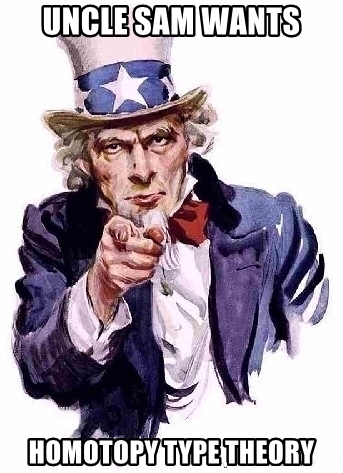Many times on this blog I’ve argued that the difference between pure and applied math is motivation. As my graduate advisor used to say, “Applied mathematics is not a subject classification. It’s an attitude.”

Traditionally there was general agreement regarding what is pure math and what is applied. Number theory and topology, for example, are pure, while differential equations and numerical analysis are applied.
But then public key cryptography and topological data analysis brought number theory and topology over into the applied column, at least for some people. And there are people working in differential equations and numerical analysis that aren’t actually interested in applications. It would be more accurate to say that some areas of math are more directly and more commonly applied than others. Also, some areas of math are predominantly filled with people interested in applications and some are not.
The US Army is interested in applying some areas of math that you would normally think of as very pure, including homotopy type theory (HoTT).
From an Army announcement:
Modeling frameworks are desired that are able to eschew the usual computational simplification assumptions and realistically capture … complexities of real world environments and phenomena, while still maintaining some degree of computational tractability. Of specific interest are causal and predictive modeling frameworks, hybrid model frameworks that capture both causal and predictive features, statistical modeling frameworks, and abstract categorical models (cf. Homotopy Type Theory).
And later in the same announcement
Homotopy Type Theory and its applications are such an area that is of significant interest in military applications.
HoTT isn’t the only area of math the Army announcement mentions. There are the usual suspects, such as (stochastic) PDEs, but also more ostensibly pure areas of math such as topology; the word “topological” appears 23 times in the document.
This would be fascinating. It can be interesting when a statistical model works well in application, but it’s no surprise: that’s what statistics was developed for. It’s more interesting when something finds an unexpected application, such as when number theory entered cryptography. The applications the Army has in mind are even more interesting because the math involved is more abstract and, one would have thought, less likely to be applied.

hybrid model frameworks :-)
What a coincidence. I was just reading the current issue of Communications of the ACM, which contains the article “The Seven Tools of Causal Inference”, which mentions pretty much all of the above areas.
Not surprisingly, statistics-based AI models have trouble extrapolating beyond their training sets. Truly “general” AI must be able to do “What if?” analyses. Lots ‘o math there.
More importantly for the near term, we first need trained models to become able to explain their outputs (with conclusions, reasoning). It should be possible for a statistics-based trained model to do this, but only if it can generalize and access concepts within the training terrain. These concepts can be externally defined (e.g. E-R databases), but must be internally mapped. More math!